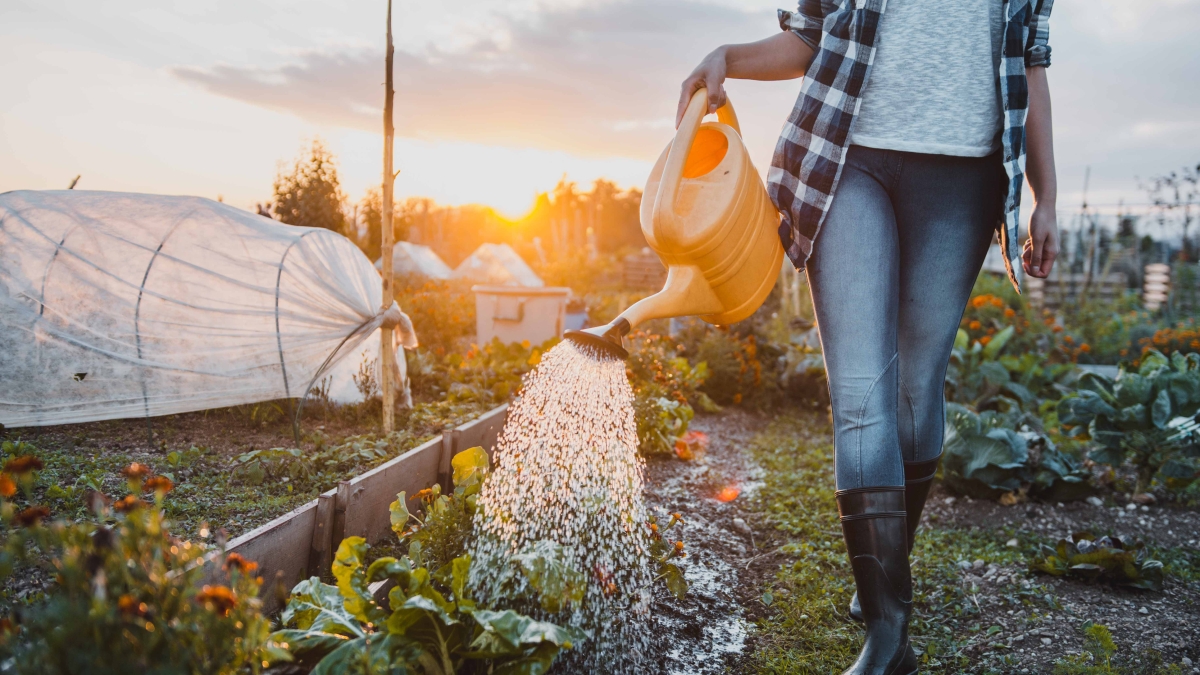Summer is at hand, and water is a key element in beating the heat.
For Phoenix-area residents, that means cold showers, dips in the pool, visits to water parks and lakes and lots of beverage consumption.
According to the Arizona Municipal Water Users Association, demand for water spikes in the summer with usage often doubling as temperatures soar past 100 degrees Fahrenheit.
“While Arizona is considered a leader in water conservation efforts, residents must also practice common sense, learn good habits and become more informed about the systems that supply their water and the users who rely on it,” said Arizona State University's Claire Lauer, an associate professor of technical communication and user experience in the College of Integrative Sciences and Arts.
Her current research investigates how people interact with and read data visualizations and how we effectively engage public audiences in learning about sustainability science and water policy.
ASU Now recently spoke to Lauer about Arizona’s water system, how residents view our most precious commodity and what can be done to cut down on consumption and waste.
Claire Lauer
Question: Even though it’s obvious that Phoenix is a desert city, does the general public know enough about our state water supply and how our system works?
Answer: In our research when we’ve asked people about their personal water use and their understanding of the sources and uses of water, we have found that people don’t generally have a true sense of how much water they use nor do they have a real understanding of the complexities of where the water comes from, how it's delivered, and what laws and agreements govern water management on a regional scale. Of course, these things can be pretty complex, and as long as people have a consistent and dependable water supply into their homes, it may be the case that people don’t feel as though they really need to know much about water beyond the general concept of not being wasteful with it on a personal level.
People we’ve interviewed from more rural areas tend to have a deeper understanding of our limited water supplies. I can see this being the case because people from rural communities typically access water differently (e.g., individual wells) and may live in closer proximity to agriculture, for which water is essential.
Q: What’s something you want people to know about Arizona’s water system?
A: When we asked people about saving water, many we spoke with could only think of taking shorter showers as a way they could help conserve water in a time of drought. I think people should move beyond thinking about water in primarily personal terms and think instead of water as a supply-and-demand system that affects all facets of their communities, including their food supply, industry, economy, environment and even recreation opportunities.
People should know that our water system is complex and that there are multiple sources from which we get water and many stakeholders who use water. When people understand how water directly affects our economy, via our industries and farms who use water, they will also see how the water available to these users affects what products and services are available to us as consumers. In this way, people might begin to see any personal sacrifices more holistically and have greater empathy for the sacrifices that will need to be made across sectors in times of drought.
Q: Where does Arizona’s water supply come from and how is it used?
A: Arizona gets about 40% of its water supply from groundwater, 36% from the Colorado River, 21% from in-state rivers, and 3% from processing reclaimed water. Some people may be surprised to know that in Arizona, about 74% of our water supply goes toward agriculture, 21% goes toward municipal use (cities and towns) and 5% goes toward industrial use. People can find out more information about our water system at a variety of websites, including the Arizona Department of Water Resources and Salt River Project.
Q: Phoenix had a great year in terms of water and wetness. Does this mean our 19-year drought is over or close to being over?
A: I wish it were that easy! Unfortunately, it’s going to take more than a single wet season to make up for the deficiencies of the past 19 years, and our lower water levels may be permanent. A group of scientists, water managers and advisers called the Drought Interagency Coordinating Group gather twice a year to advise the governor on Arizona’s drought conditions. In 2019 they recommended that the governor renew the long-running Drought Emergency Declaration for Arizona.
Q: Arizona is part of a large regional body that recently came to an agreement with other Western states on a Drought Contingency Plan (DCP). How does this new plan affect Arizona residents?
A: In the immediate term, the DCP doesn’t change the general public’s ability to access the water they need. The DCP actually helps keep Arizona from feeling the effects of the continued drought in the near future. It was a really important next step in getting the people who manage and make use of the Colorado River into the same room to discuss solutions to our regional water supply and demand imbalance. Unfortunately, the DCP is not a long-term solution or a magical silver bullet, but it does give the lower-basin states that rely on the Colorado River (Arizona, California and Nevada) and the many municipalities within those states some breathing room to work toward more sustainable solutions. A real success of the DCP, in my opinion, is that it demonstrated an understanding of the sacrifices that need to be made across all sectors and that we will need to continue to work together to further negotiate our water management solutions over the long term.
Q: Is there anything individual consumers can do to make a dent in water conservation in times of drought?
A: We should all be aware that water is a finite resource and that having a sustainable supply is essential to a stable economy and environment. Despite our best attempts, the potential for a Colorado River water shortage is still very real and, in some scenarios, may occur in the near future. Individual citizens need to continue to utilize commonsense water conservation strategies in their homes and make additional strides in conserving more water outdoors. With nearly 70% of residential water being used outdoors, this is the biggest area where residents can make individual gains.
Up to this point, our water managers and policy makers have done much of the difficult work in making sure that we have enough water. But as we “max out” the ways in which technology can help make our water use more efficient (e.g., low-flow toilets and showerheads and high-efficiency agricultural irrigation systems), people will need to better express their opinions about the kinds of choices and sacrifices they are willing to make — as a community — to manage a diminished supply. And to do that, they will need to be informed.
People should make it a priority to learn more about how we manage this vital resource. Understanding the complexity of our water system can help people become more empathetic to the challenges of different water users. This goes for agricultural interests, environmental advocates, municipalities, tribal communities and rural and urban Arizonans, among others. The solutions we develop in the near future will require buy-in from everyone. We are all in this together.
Top photo courtesy of Getty Images
More Environment and sustainability

From environmental storytelling to hydroponics, student cohort crafts solutions for a better future
A select group of students from Arizona State University's College of Global Futures, a unit within the Julie Ann Wrigley Global Futures Laboratory, is laying the foundation to drive change…

2 ASU faculty elected as AAAS Fellows
Two outstanding Arizona State University faculty spanning the physical sciences, psychological sciences and science policy have been named Fellows of the American Association for the Advancement of…

Homes for songbirds: Protecting Lucy’s warblers in the urban desert
Each spring, tiny Lucy’s warblers, with their soft gray plumage and rusty crown, return to the Arizona desert, flitting through the mesquite branches in search of safe places to nest.But as urban…



